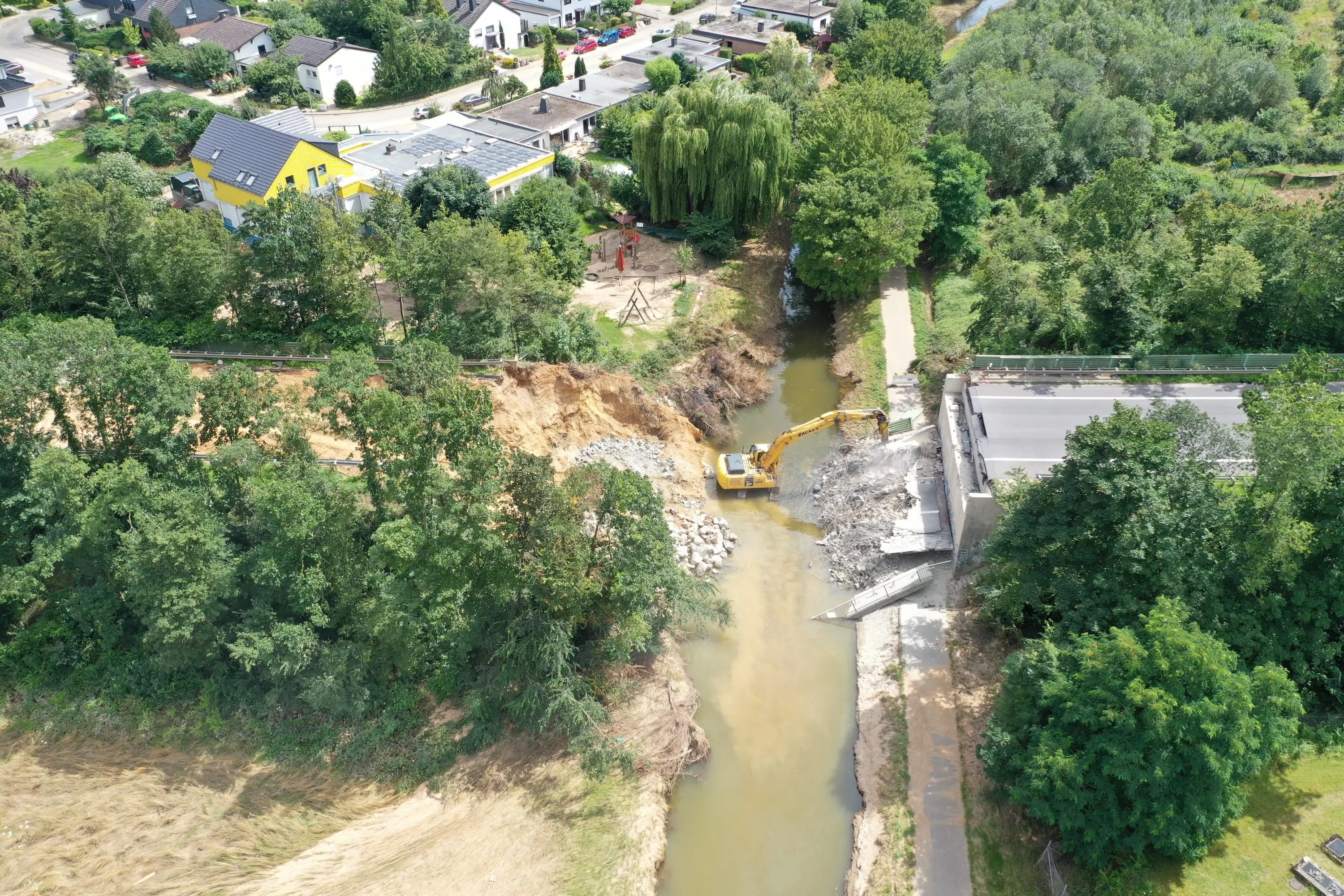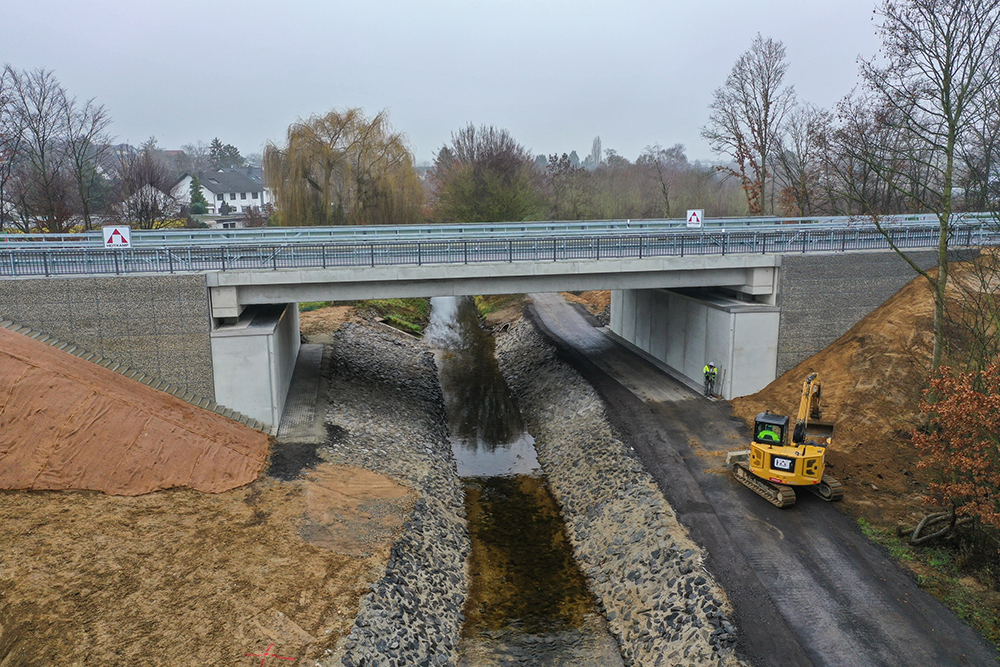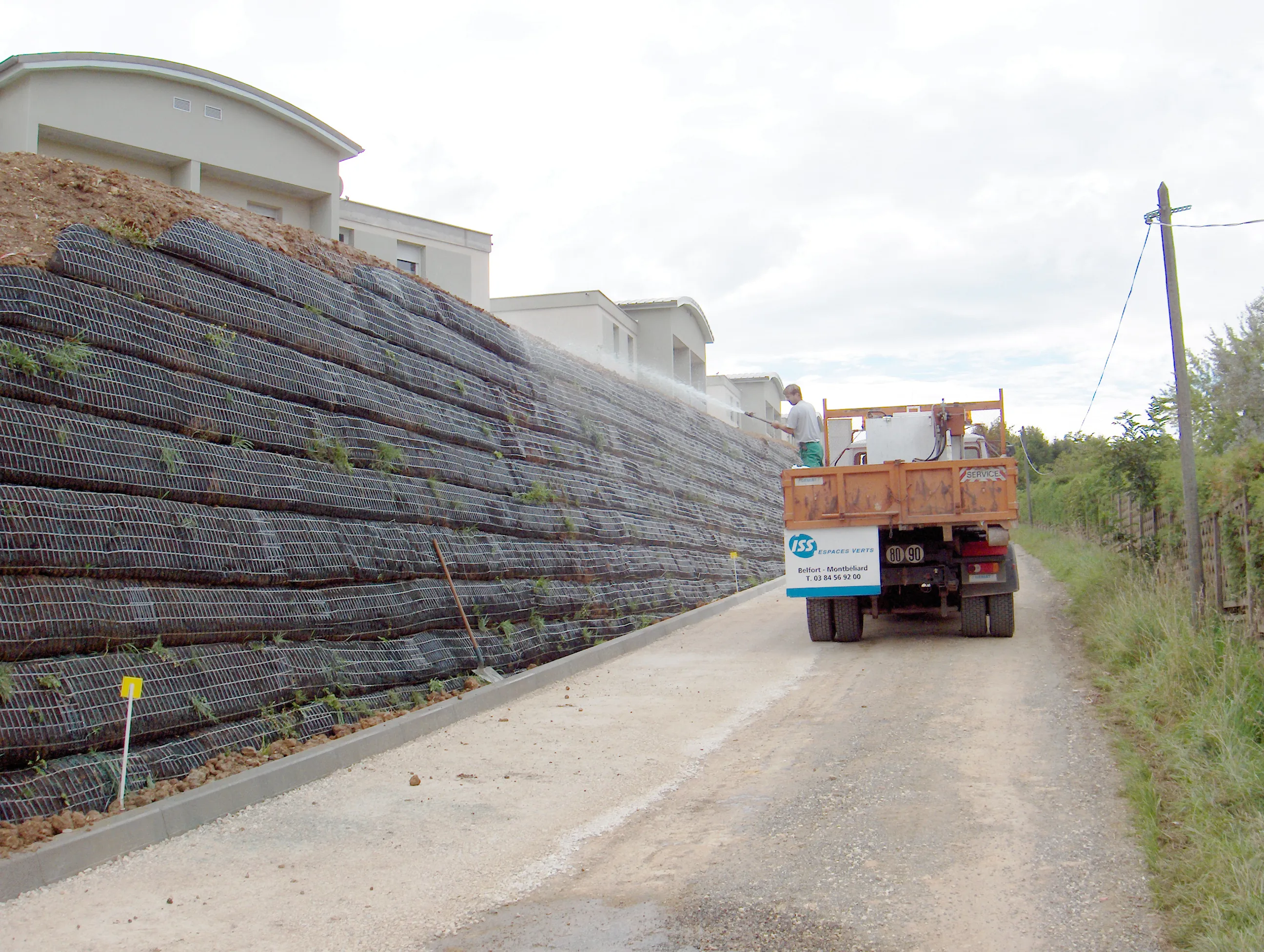
The increase of extreme weather events that damage or completely destroy infrastructure has meant that rapid but safe reconstruction measures are required. Geosynthetics can be part of the solution to ensure that the required quick response is achieved.
For example, urgently needed temporary utility roads, construction roads and work platforms can be quickly and safely constructed with geogrids or reinforcing mesh - even in very soft soils. Temporary storage of waste and contaminated sludge is also possible thanks to geosynthetic contaminant barriers, filters and sludge dewatering hoses.
The construction of the new Swistbach Bridge in Heimerzheim, 30km from Cologne, is a case in point. The bridge, which carries the L182 highway over the Swistbach River, was completely destroyed due to flooding resulting in the need for a totally new structure. After a record construction time of just three months, the new bridge was reopened to traffic last December.
The Swistbach Bridge has not only been built to be withstand similar extreme weather, but it is also has a span larger span by more than 4m, reaching 24.3m between the abutments. This allows the riverbed to pass through an opening 4m wider so flooding is less likely.
All this was made possible by the innovative fast construction method Heitkamp Schnellbruecke system, developed by German construction group Heitkamp BauHolding using geosynthetics from Huesker. The load-bearing columns of the system - the abutments - are made of composite flexible geogrids and locally available soils. They form the long-term safe load-bearing heavy-duty elements of the bridge.
Constructions of geosynthetic-reinforced earth basically allows very fast building of bridge abutments. Unlike in Germany, reinforced-earth structures have been among the standard construction methods used for the majority of infrastructure projects in the Netherlands for a very long time.
By using geogrid and earth construction, build time of the abutments was reduced from up to three months to just 10 days. By using fewer resources and transporting less material, there was also a CO₂ saving. But overall, it was the excellent cooperation between the two companies that led to rapid construction.
Huesker, for example, was able to provide the structural calculations for the abutments, alkali-resistant Fortrac geogrids and non-wovens in a very short time thanks to its many years of experience, including in 2019. Heitkamp was working on a bridge replacement over the A3 near Emmerich am Rhein in the northwest federal state of North Rhine-Westphalia. The Heitkamp Schnellbaubruecke system was used there and led to it being recognised as a standard construction method in Germany.
Sustainability
But economical and rapid construction are only part of what is needed when responding to reconstruction of damaged infrastructure. Other factors such as sustainability play an increasingly significant role: the materials used, the service life of the new structure, aesthetics and environmental impact including disruption to animal habitat and migration patterns. It is, therefore, not surprising that more and more proven construction methods are being replaced by alternative, more resource-efficient solutions such as geosynthetic system.

Where smooth concrete walls used to line canals o river banks, geotextiles are now used. Research has found that there has been an issue with how a smooth surface, rather than an irregular surface, does not allow micro-organisms and small flora to accumulate and survive. Also, when they have accumulated and taken hold, they can have a positive effect on regulating effect on the flow properties of the canal water or river.
Dams and dykes are built in such a way that their surfaces can be overgrown and colonised by local nature, thus blending into the landscape as naturally as possible. Construction of erosion-proof spillways and stormwater retention basins for to mitigate the effects of local heavy rainfall are possible with geosynthetic building materials.
It is also proven that, in direct comparison with conventional construction methods, build times using geosynthetics can be shortened – apart from providing a better environmental balance and improving a structure’s life-cycle. The reduction of building materials, such as concrete or asphalt, and the reusability of existing soils not only conserve resources, but also requires less transport, which makes the entire construction process significantly faster.
Overall, the use of geosynthetics in flood protection enables numerous added values for people and the economy in reconstruction and flood prevention.
*The Huesker Group, a global manufacturer of geosynthetics and technical textiles, is based in Gescher, Germany. The company has 10 subsidiaries as well as trading and distribution partners in more than 60 countries. For more details, click here to visit the Huesker Synthetic flood protection website.








